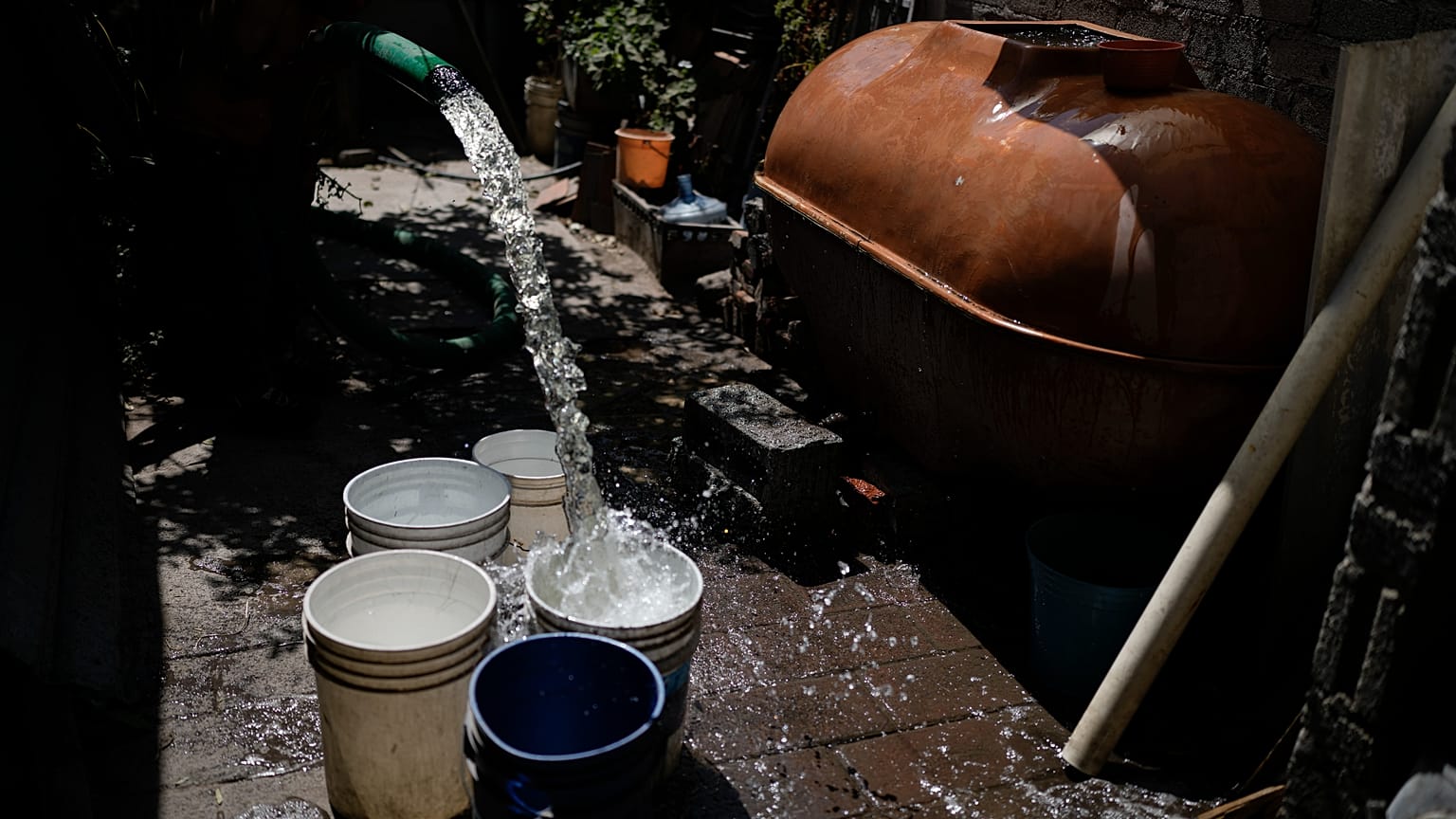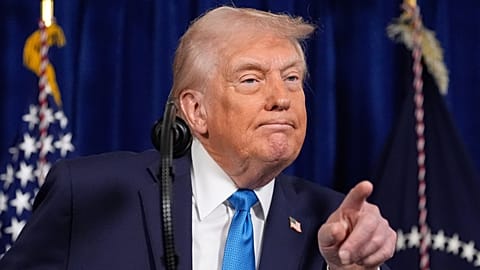The leading presidential candidate is not making climate a central part of her campaign ahead of the 2 June election.
Sealevel rise and increasingly ferocious storms - both driven by climate change - are eroding thousands of miles of Mexico's coastline facing the Gulf and the Pacific Ocean.
Around this country of nearly 130 million people, drought is draining reservoirs dry and creating severe water shortages.
Deadly heat is straining people and crops and aging infrastructure is struggling to keep up.
But the leading presidential candidate, Claudia Sheinbaum, an environmental scientist and a co-author of the 2007 Nobel Prize-winning Intergovernmental Panel on Climate Change report, is not making climate a central part of her campaign ahead of the 2 June election.
Mexico is the world’s 11th-largest oil producer
As many countries move away from the burning of fossil fuels like oil and gas, President Andrés Manuel López Obrador, one of Mexico’s most popular leaders in generations, has moved his country in the opposite direction.
Sheinbaum is often seen as the mentee of López Obrador, who is restricted by law to one term.
As president, López Obrador has pumped billions of dollars into Mexico’s indebted state oil company and has been pushing an overhaul of the country’s energy sector that has boosted fossil fuel production and hindered investment in renewable energy projects.
That has resulted in Sheinbaum, who until last June was Mexico City's mayor, having largely gone quiet on global warming in Mexico, the world’s 11th-largest oil producer.
Mexico faces climate change-induced water crisis
As the election approaches, a worsening water crisis is making it harder for presidential candidates to ignore Mexico’s climate threats.
Sprawling Mexico City gets its water from overtapped underground aquifers and a vast network of canals, dams and reservoirs called the Cutzamala System.
Persistent drought intensified by climate change and El Niño has drawn the system to record lows.
Neighbourhoods not connected to the system are feeling the pinch of hot temperatures and delayed water deliveries by trucks.
Laundromats have gone weeks without water and shortages have even hit restaurants and businesses in affluent neighbourhoods like Polanco, sometimes called the “Beverly Hills of Mexico.”
Will Mexico’s next president prioritise climate change?
At the heart of Sheinbaum’s silence appears to be the conundrum facing many leaders in the face of climate change: should they sacrifice immediate political and economic needs to grapple with the longer-term changes necessary for human survival?
Sheinbaum told The Associated Press news agency that she believes in science, technology and renewable energy but has also said that if she wins she would continue increasing power generation by state-owned companies, which often run power plants with oil and coal.
Her main opponent, Xóchitl Gálvez, a former opposition senator, has said she would promote private investment in the energy sector if elected.
The businesswoman has promised to permanently close refineries in Nuevo Leon and Tamaulipas states within the first six months of her presidency and has proposed transforming the country’s state-run oil and gas company into one that could also produce electricity using renewable sources such as geothermal energy.
Whoever wins will be the first female president of Mexico.
Will the next presidency improve Mexico’s environmental record?
Under López Obrador, Mexico has prioritised fossil fuel production in a quest to nationalise power generation in a country still deeply dependent on fuel imports.
That's exemplified by his flagship - still not operational - Olmeca oil refinery located just 80 kilometres west of the mostly disappeared town of El Bosque in Tabasco.
López Obrador’s government also purchased a refinery in Texas and passed legislation - part of which Mexico’s Supreme Court recently struck down - to limit how much electricity private gas and renewable energy facilities can sell.
The policy would have favoured the state-owned electrical power company over private power firms.
When confronted about his administration’s environmental record, López Obrador has pointed to hydroelectric plants that have been renovated, his oft-questioned reforestation program and a solar energy project in the state of Sonora, among others.
Yet scientists at Climate Action Tracker, a group that scrutinises nations’ pledges to reduce emissions, have criticised Mexico’s backtracking on its already modest climate targets, downgrading its rating in 2021 and 2022 to “critically insufficient,” the lowest level.
Sheinbaum has said she supports the president’s goal of keeping 54 per cent of Mexico’s electricity generation under state control, a vision that effectively casts aside more renewable energy production in favour of dirtier fuels.
But there are also some indications that Sheinbaum could take a more science-driven approach than her predecessor. Many point to her performance as mayor of Mexico City during the coronavirus pandemic for clues.
As mayor, Sheinbaum emphasised mask-wearing, testing and vaccination while López Obrador often minimised the dangers of the virus that ravaged Mexico.
Decades prior, Sheinbaum worked on plans to measure Mexico City's air pollution.
As mayor, she boosted the city’s public electro-mobility and cycling infrastructure, and initiated a large solar power park on the rooftops of a major wholesale market.
As for water, Sheinbaum has repeatedly said that Mexico needs a 30-year plan, an idea she has reiterated on the campaign trail.
She recently laid out a plan in which she said her administration would prioritise better measuring water use in Mexico across sectors, especially agriculture, which uses the vast majority of the country's water. But the plan was light on details about how her government would do so.
With so many Mexicans already affected by climate change, the winner of the election will play a pivotal role in deciding how prepared the country is to meet those challenges.


















